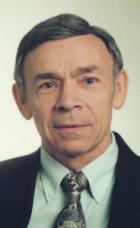SI-derived units of measurement are defined algebraically in terms of base units. There are 22 SI-derived units. Units of measurement related to geometry, lighting, radiation and chemistry are not included in this series.
On Oct. 20, 1960, the 11th meeting of the General Conference on Weights and Measures, also known as CGPM, adopted the hertz as a unit of frequency, replacing the previous name for the unit, cycles per second. Hertz replaced cycles per second in common use by 1970. Expression of the hertz in terms of SI base units is 1 ∕ s or s-1.
Heinrich Hertz (1857-1894) was a German physicist. He found that electrical conductors reflect waves and concave reflectors can focus them. These waves, originally called Hertzian waves and now known merely as waves, come in the form of both light and radio waves.
The unit of hertz bears his name. Austrian physicist Hermann von Helmholtz said, “One should emphasize the extraordinary import of Hertz’s discoveries in relation to our whole concept of nature.”
On Oct. 21, 1948, the ninth CGPM adopted the newton as a unit of force. A force of 1 N accelerates a mass of 1 kg at a rate of 1 m per second per second (m ∕ s2). The mathematical expression of the newton is N = kg × m ∕ s2. Expression of the newton in terms of SI base units is m × kg × s-2.
Sir Isaac Newton (1643-1727) was an English mathematician, physicist, astronomer and theologian. His laws of motion and universal gravitation are the foundation for predicting a wide variety of scientific and engineering situations, especially the motion of celestial bodies.
His calculus became vitally important to the development of future scientific theories. He unified many of the physical facts that had been discovered earlier into a satisfying system of laws. For this reason, he is considered one of the greatest scientists, and the unit of newton bears his name.
On Oct. 8, 1971, the 14th CGPM adopted the pascal as a unit of pressure and stress. The mathematical expression of the pascal is Pa = N ∕ m2. Expression of the pascal in terms of SI base units is m × kg × s-2 ∕ m2 = m-1 × kg × s-2. Expression of the pascal in terms of SI-derived and base units is N × m-2.
Blaise Pascal (1623-1662) was a French mathematician, physicist and philosopher who made significant contributions to the study of fluids and laid the foundation for hydrostatics and hydrodynamics. The unit of pascal is named in his honor.



